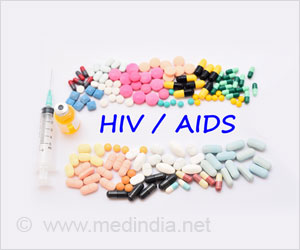Most of the World Bank’s anti-AIDS projects have failed to make much of a headway. The performance in Africa, considered the epicenter of the pandemic, was particularly bad.
Most of the World Bank’s anti-AIDS projects failed to make much of a headway in the last decade. The performance in Africa, considered the epicenter of the pandemic, was particularly bad.
In an internal evaluation, it has been stated that seven of 10 AIDS projects that the bank financed around the world — and 8 of 10 in Africa — had unsatisfactory outcomes.>The report focusses on the World Bank Group’s support for health, nutrition, and population (HNP) to developing countries since 1997.
It was indeed a huge budget, totaling $17 billion in country-level support by the World Bank and $873 million in private health and pharmaceutical investments by the International Finance Corporation (IFC) through mid-2008.
Experts have always argued that a hugely disproportionate attention to AIDS has had a negative effect on aid efforts for other health problems.
While the focus on AIDS accounted for nearly 60 percent of the bank’s projects on communicable diseases from 1997 to 2006, more successful efforts aimed at malaria, tuberculosis and leprosy, among others, got far fewer resources. Malaria, for example, made up 3 percent of the projects, and tuberculosis only 2 percent.
As the World Bank put more resources into AIDS projects, its support for family planning and efforts to reduce malnutrition plunged.
Advertisement
About 1 in 10 projects had an objective to reduce malnutrition, which essentially affects the poor, but the share of projects with nutrition objectives dropped by half over the decade.
“Lending to reduce high fertility or improve access to family planning accounted for only 4 percent of the lending portfolio, dropping by two-thirds between the first and second half of the decade, at a time when the need for such support remained high. Population support was directed to only about a quarter of the 35 countries the Bank identified as having the highest fertility (with rates of more than five children per woman).
"Analytic work and staffing to support population and family planning objectives nearly disappeared. Substantial analysis of population and nutrition issues rarely figured in poverty assessments, even though both issues are most acutely felt by the poor.”
Helping women control the number of children they bear is essential to reducing the high rates at which they die in childbirth in the poorest nations, said Martha Ainsworth, lead author of the evaluation. “The fact that no one’s been paying attention to reducing high fertility is critical for Africa,” she said.
About two-thirds of the World Bank’s HNP lending has had satisfactory outcomes, often in difficult environments, but a third has not performed well. Contributing factors have been the increasing complexity of HNP operations, particularly in Africa but also in health-reform support to middle-income countries; inadequate risk assessment and mitigation; and weak monitoring
and evaluation.
Accountability of projects for delivering health results to the poor has been weak. Improving health outcomes among the poor is among the foremost objectives of the 2007 HNP strategy. Studies of the incidence of public expenditure have shown that in most countries, public health spending favors the non-poor; mere expansion of services cannot be assumed to improve access of the poor relative to the non-poor, it has been stressed.
Suggestions have also been made for better governance of the projects and stricter scrutiny of the implementation of the various programmes.
Source-Medindia
GPL/L






